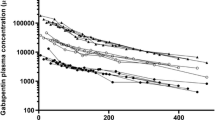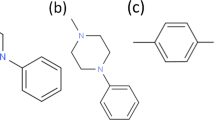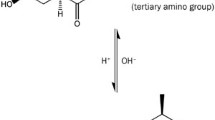Abstract
Purpose. The purpose of this study was to examine factors limiting the intestinal absorption of orally inactive β-lactam antibiotics.
Methods. Permeation behaviors of various β-lactam antibiotics across rat intestinal segments were evaluated in vitro using diffusion cells.
Results. Poorly absorbed β-lactam antibiotics, like cephaloridine and cefoperazone, commonly exhibit greater serosal-to-mucosal permeation than mucosal-to-serosal permeation, while cephalexin permeation was greater in the mucosal-to-serosal direction. In the absence of D-glucose, secretory-oriented permeation of cephaloridine and cefoperazone disappeared. Addition of sodium azide into an experimental buffer including D-glucose significantly and selectively enhanced mucosal-to-serosal permeation of cephaloridine and cefoperazone. Although benzylpenicillin, ampicillin, and amoxicillin all showed secretory-oriented permeation, the tendency to permeation was greatest with benzylpenicillin and least with amoxicillin. Probenecid stimulated mucosal-to-serosal permeation of cephaloridine, but verapamil and p-aminohippuric acid had no significant effect on it.
Conclusions. It has been suggested that mechanisms which induce secretory-oriented permeation of orally inactive β-lactam antibiotics are factors limiting intestinal absorption of such antibiotics. This energy-demanding efflux system was distinct from P-glycoprotein-mediated transport. A free α-amino group in the molecule is an important factor for reducing an affinity with the efflux system.
Similar content being viewed by others
REFERENCES
T. Bergan. Scand. J. Infect. Dis. Suppl. 42:83–98 (1984).
S. M. Catnach, P. D. Fairclough, and S. M. Hammond. Gut 35:441–444 (1994).
C. H. Gochoco, F. M. Ryan, J. Miller, P. L. Smith, and I. J. Hidalgo. Int. J. Pharm. 104:187–202 (1994).
M. Sugawara, H. Saitoh, K. Iseki, K. Miyazaki, and T. Arita. J. Pharm. Pharmacol. 42:314–318 (1989).
H. Saitoh, C. Gerard, and B. J. Aungst. J. Pharmacol. Exp. Ther. 278:205–211 (1996).
B. J. Aungst and H. Saitoh. Pharm. Res. 13:114–119 (1996).
G. M. Grass and S. A. Sweetana. Pharm. Res. 5:372–376 (1988).
I. Tamai, A. Tsuji, and Y. Kin. J. Pharmacol. Exp. Ther. 246:338–344 (1988).
J. Hunter, M. A. Jepson, T. Tsuruo, N. L. Simmons, and B. H. Hirst. J. Biol. Chem. 268:14991–14997 (1993).
P. F. Augustijns, T. P. Bradshaw, L.-S. L. Gan, R. W. Hendren, and D. R. Thakker. Biochem. Biophys. Res. Commun. 197:360–365 (1993).
P.-F. Bai, P. Subramanian, H. I. Mosberg, and G. L. Amidon. Pharm. Res. 8:593–599 (1991).
D.-M. Oh, P. J. Sinko, and G. L. Amidon. J. Pharm. Sci. 82:897–900 (1993).
K. Iseki, K. Mori, K. Miyazaki, and T. Arita. Biochem. Pharmacol. 36:1837–1842 (1987).
I. J. Hidalgo, F. M. Ryan, G. J. Marks, and P. L. Smith. Int. J. Pharm. 98:83–92 (1993).
J. F. Poschet, S. M. Hammond, and P. D. Fairclough. Biochim. Biophys. Acta 1278:233–240 (1996).
H. Yuasa, G. L. Amidon, and D. Fleisher. Pharm. Res. 10:400–404 (1993).
A. Tsuji, T. Terasaki, K. Takanosu, I. Tamai, and E. Nakashima. Biochem. Pharmacol. 35:151–158 (1986).
H. Suzuki, Y. Sawada, Y. Sugiyama, T. Iga, and M. Hanano. J. Pharmacol. Exp. Ther. 242:660–665 (1987).
Author information
Authors and Affiliations
Rights and permissions
About this article
Cite this article
Saitoh, H., Fujisaki, H., Aungst, B.J. et al. Restricted Intestinal Absorption of Some β-Lactam Antibiotics by an Energy-Dependent Efflux System in Rat Intestine. Pharm Res 14, 645–649 (1997). https://doi.org/10.1023/A:1012113430539
Issue Date:
DOI: https://doi.org/10.1023/A:1012113430539




